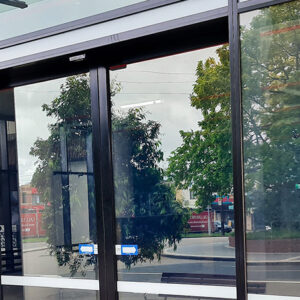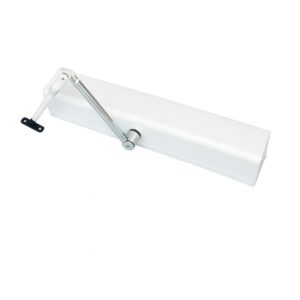Sustainability in Gate Systems: A Comprehensive Guide
Sustainability is no longer just a buzzword; it has become a crucial consideration for industries across the globe, including the construction and manufacturing sectors. Gate systems, often overlooked in discussions about sustainability, play a vital role in residential, commercial, and industrial applications. This article delves into the significance of sustainability in gate systems, exploring eco-friendly materials, energy-efficient technologies, and best practices for implementation.

Read more: Top Gate Automation Trends in 2024
Table of Contents
ToggleThe Importance of Sustainability in Gate Systems
1. Environmental Impact
Gate systems contribute to a building’s overall carbon footprint. By incorporating sustainable practices in their design and installation, we can significantly reduce the environmental impact. Sustainable gates can help mitigate issues such as resource depletion, habitat destruction, and pollution.
2. Economic Benefits
Investing in sustainable gate systems can lead to cost savings over time. While the initial investment might be higher, the long-term savings in energy and maintenance costs can be substantial. Moreover, sustainable systems often enhance property value, making them a wise choice for homeowners and businesses alike.
3. Social Responsibility
Consumers today are increasingly conscious of their purchasing decisions. By opting for sustainable gate systems, companies demonstrate their commitment to environmental stewardship, which can enhance their brand image and foster customer loyalty.
Key Elements of Sustainable Gate Systems
1. Eco-Friendly Materials

The choice of materials is critical in creating sustainable gate systems. Here are some options:
- Recycled Materials: Using recycled metals, plastics, and wood reduces the demand for new resources and minimizes waste. Gates made from recycled materials not only lower the environmental impact but can also be aesthetically pleasing and unique.
- Sustainable Timber: Timber is a popular choice for gate construction, but it’s essential to source wood from sustainable forests. Certifications like the Forest Stewardship Council (FSC) indicate that the wood comes from responsibly managed forests, ensuring minimal environmental impact.
- Composites: Composite materials, made from a mix of recycled plastics and wood fibers, offer durability and resistance to weather elements. They require less maintenance and have a longer lifespan, making them an excellent choice for sustainable gate systems.
2. Energy Efficiency

Energy efficiency is another critical factor in sustainable gate systems. Here’s how it can be achieved:
- Solar-Powered Automation: Integrating solar panels into gate systems can reduce reliance on grid electricity. Solar-powered gate operators utilize renewable energy, lowering operational costs and contributing to a smaller carbon footprint.
- Smart Technology: The advent of smart technology allows gate systems to optimize energy usage. For instance, smart sensors can detect when a vehicle approaches, ensuring the gate opens only when necessary, reducing unnecessary power consumption.
- LED Lighting: Incorporating energy-efficient LED lighting in gate systems enhances visibility while using significantly less energy than traditional lighting options. This small change can have a positive impact on overall energy consumption.
3. Water Management
Sustainable gate systems also consider water management:
- Rainwater Harvesting: Incorporating rainwater collection systems into the design of gate systems can help in reusing water for irrigation and other purposes. This not only conserves water but also helps in maintaining the landscape surrounding the gate.
- Permeable Paving: For gates that are part of a larger driveway or pathway, using permeable paving can facilitate proper drainage and reduce runoff. This approach minimizes erosion and helps recharge groundwater supplies.
Best Practices for Sustainable Gate System Installation

1. Conduct a Sustainability Assessment
Before installing a gate system, conducting a sustainability assessment can help identify opportunities for improvement. This assessment should include evaluating the environmental impact of materials, energy usage, and overall design.
2. Choose Local Suppliers
Opting for local suppliers can significantly reduce the carbon footprint associated with transporting materials. Local sourcing also supports the local economy and fosters community relationships.
3. Engage in Responsible Disposal
When replacing an old gate system, it’s essential to consider responsible disposal methods. Recycling materials where possible and ensuring that waste is minimized contributes to a more sustainable approach.
4. Educate and Train Installation Teams
Investing in training for installation teams on sustainable practices ensures that they understand the importance of eco-friendly methods. This knowledge can lead to better installation techniques and practices that align with sustainability goals.
Read more: Top Gate Automation Trends in 2024
Challenges in Implementing Sustainable Gate Systems

1. Higher Initial Costs
One of the significant barriers to adopting sustainable gate systems is the higher upfront costs. While these systems often provide long-term savings, the initial investment can deter some consumers.
2. Limited Availability of Sustainable Materials
Depending on the region, access to sustainable materials may be limited, making it challenging to implement eco-friendly practices in gate system construction.
3. Lack of Awareness
Many consumers and businesses may not be aware of the benefits of sustainable gate systems. Educating stakeholders about sustainability in this sector is crucial for promoting change.
Future Trends in Sustainable Gate Systems
1. Increased Use of Automation
As technology advances, the integration of automation in gate systems will become more prevalent. This will lead to enhanced energy efficiency and improved user experience.
2. Growing Demand for Customization
Consumers are increasingly looking for gate systems tailored to their specific sustainability needs. Custom solutions that consider local climate, environmental impact, and aesthetic preferences will become more popular.
3. Focus on Lifecycle Analysis
Future designs will likely incorporate lifecycle analysis, considering the environmental impact from production to disposal. This approach will help manufacturers create truly sustainable products.
Conclusion
Sustainability in gate systems is not just an option; it’s a necessity for a more environmentally responsible future. By focusing on eco-friendly materials, energy efficiency, and smart technology, stakeholders can make significant strides toward reducing their carbon footprint. Implementing sustainable practices in gate systems not only benefits the environment but also enhances economic viability and social responsibility. As awareness and demand for sustainable solutions continue to grow, the gate system industry will evolve, paving the way for greener, more efficient designs that contribute to a sustainable future.
-
Automatic Sliding Door Kit 200kg – Brilliant
$1,268.36 (ex. GST)Please login to see trade price
Add to cart -
Automatic Sliding Door Kit RECORD STA 21 – Brilliant
$3,734.55 (ex. GST)Please login to see trade price
Add to cart -
-
Automatic Swing Door Opener Kit 100kg – Brilliant
$971.82 (ex. GST)Please login to see trade price
Add to cart -
DEA LIVI Kit 4/24X/M/AU – 400kg Sliding Gate Motor
$726.36 (ex. GST)Please login to see trade price
Add to cart -
Digital Wireless Keypad Nice Motor EDSWG
$159.09 (ex. GST)Please login to see trade price
Add to cart






